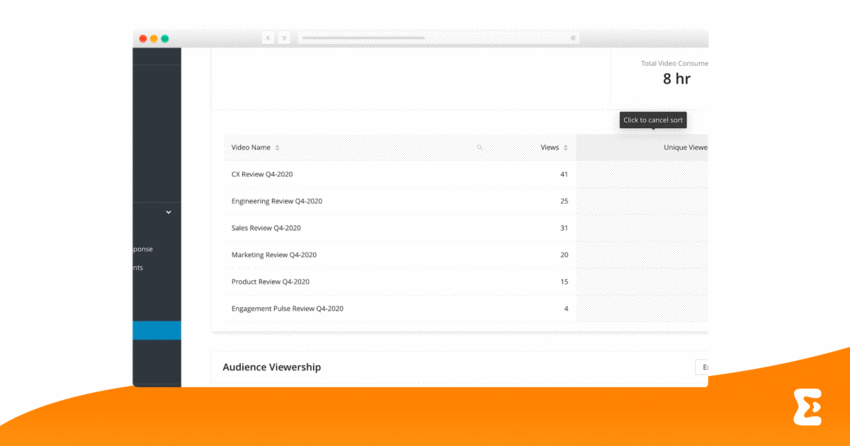Hybrid Event Best Practices: A Virtual-First Approach

After a year of adapting to virtual-only formats, many within the events industry are eagerly predicting that 2021 will be the year of hybrid events. What best practices will be essential in this new landscape?
While hybrid events may seem like more familiar territory than strictly virtual formats, it is still too early to fall back on old models. Prior to 2020, most hybrid events treated the virtual audience as an afterthought. Hybrid events were designed around the in-person experience, with live streams of speaker presentations tacked on as a bonus feature.
Fast forward to 2021, and the relationship is reversed: The virtual audience makes up the lion’s share of attendees, and small-scale in-person experiences are being incorporated into the event plan on an almost provisional basis.
Planning Hybrid Events in 2021
For the best chance of success, event organizers must continue to put their online audience first. Physical event attendance will continue to face limitations in terms of venue capacity and travel restrictions for at least the first of half of 2021. By contrast, an event’s virtual reach is practically unlimited. And while even the most well-planned in-person components risk cancellation, virtual ticket earnings are a safer bet.
The real question then becomes how to create real value for the virtual audience without compromising the in-person experience. In this guide, we provide practical tips on how to make a virtual-first approach work for your next event.
When Should You Make the Leap to Hybrid Events?
Before committing to host a hybrid event, first ask yourself: At what point does it make sense to start planning for an in-person component, and how big should it be?
Ultimately, the decision boils down to three main factors:
- Safety issues
- Event format compatibility
- Budget
Safety Concerns
When it comes to meeting safety standards, event planners need to consider consumer confidence as much as regulatory policy.
Monitor local news closely to identify any trends that might lead to tighter restrictions down the line. These indicators can also help to predict underperforming ticket sales. And it’s just as crucial to follow vaccine rollout plans — as well as unforeseen delays in production levels.
If you’ve already developed an online community through a virtual event platform, consider conducting a survey of past virtual event attendees. That way, you can gauge both their priorities and their comfort levels.
Event Format Compatibility
The format of your event also has bearing on whether the live experience will add enough value to make the investment worth it. Here are some questions to help guide your decision:
- Do attendees depend on the ability to network and close deals in person?
There are various strategies for connecting virtual participants online, but these exchanges may not feel quite the same as those chance meetings that happen organically at informal cocktail hours. On the other hand, most of us are now comfortable with and know how to make the most of virtual networking. More introverted personalities may even prefer online networking activities like EventMobi’s gamification options. To test the waters, consider polling prospective attendees on whether in-person exchanges are vital to their business objectives before moving forward with an on-site component.
- Is actually ‘being there’ going to heighten the event experience?
In-person engagement can be pivotal for special events that engage multiple senses, such as site-specific experiences or performances. More specific examples include incentive trips or and live entertainment attractions.
- Does the event revolve around a large-scale display?
Think marketing activations that involve immersive branded experiences or educational installations. Companies that sell equipment that requires hands-on interaction, for example, depend on physical gatherings to launch new products and conduct internal meetings.
- Conversely, are the event’s main attractions adaptable to online delivery?
Some formats can be just as – if not more – effective online. If the event’s primary purpose is to convey ideas clearly, live stream or pre-recorded content may actually be optimal. Examples include educational presentations or events like product launches that hinge on narrative-based messaging and exciting visual content.
Budget Limitations
Budget may ultimately be the most important factor to consider when deciding whether to go hybrid or not. In-person events generally involve much higher costs for both the organizer and the participants. Extra expenses include:
- Venue rental, stage setup, lighting, and AV recording equipment
- Onsite staffing and supply costs (catering, cleaning, security, PPE)
- Travel and transportation
Moreover, in-person events represent a higher investment risk because the pandemic continues to increase the likelihood of cancellation. For anyone operating on a tight budget, fully virtual conferences may still be the safest bet.
How to Turn a Profit with the New Hybrid

Despite the inevitable financial risk involved in hosting a hybrid event, there are strategies that can help to ensure a successful business model. If you are ready to take the leap, we have tips to help you land on your feet.
One of hybrid’s key benefits is that it provides two potential revenue streams — in-person tickets and virtual tickets. The real trick is to ensure that the virtual component offers enough value to attract paying customers. With a virtual-first approach, event planners will still have a safety net if their in-person plans fall through.
Designing The Optimal Pricing Model for Hybrid Events
Traditionally, in-person tickets have been the primary (if not the only) source of revenue for event organizers, with virtual participation made available at heavily discounted rates or even for free.
Under the new hybrid model, on the other hand, the enhanced virtual component offers enough value to justify charging for online participation. A tiered system, sometimes called dynamic pricing, can give you the best of both worlds: accessibility and profitability. General admission tickets can be set at an affordable price point to maximize the event’s reach, while upgraded ticket options can provide a higher rate of return.
Registration: Create 2 Core Paths with Custom Experiences, All in One Platform
The first step is to choose a virtual event platform that allows you to create custom ticketing with different registration processes for virtual and in-person attendees. EventMobi’s Hybrid Event Platform, for example, allows you to set separate paths for registration. Each pricing tier can be associated with:
- Conditional visibility, allowing you to dictate exactly what content each user can see (and when they can see it)
- Customized scheduling options
The two primary ticket categories will of course be either in-person or virtual. Within the virtual option, however, you can set different pricing levels, such as General Admission, GA Upgrade, and VIP. A well-designed virtual event platform should allow you to offer each attendee a fully personalized experience. Be sure to add top tier content teasers in your event marketing to drive excitement around these ticket categories.
Sponsorship: A Way to Support Lower Ticket Costs
Sponsorship money can be another way to finance hybrid events, and once again, the virtual audience can be crucial to your value proposition. Sponsors want to reach as many potential clients as possible, and online events have virtually unlimited audience potential.
Given the breadth of content available online, they also have virtually unlimited competition. With this in mind, TV-level production value will be necessary to optimize your digital event’s promotional potential. While it may mean a bigger upfront investment, professional recordings can be edited to produce evergreen content that will continue to generate brand recognition long after the live event.

Another benefit of hybrid events is that the virtual event platform can offer advanced analytics — even about the in-person audience’s engagement levels. This data can be highly valuable for lead generation and other marketing objectives. Additional advantages that come with using a virtual event platform include the ability to:
- Integrate sponsor sizzle reels into the programming
- Overlay logo banners and other branding elements within the screen layout
- Broadcast advertisements and other promo material to virtual audiences during live refreshment breaks
Q&A
How can we avoid refund requests for in-person attendees if we have to cancel that component?
We recommend encouraging would-be attendees to exchange their in-person tickets for VIP virtual tickets. The more compelling an event’s virtual offerings, the more protected it will be against potential revenue losses from in-person cancellations.
Should you charge the same registration price to attendees regardless of whether they decide to attend virtually or in person?
Some hybrid events are charging the same price for the virtual VIP experience as for in-person tickets, but they tend to offer most of their content exclusively through virtual channels, with only some components staged in-person. Generally, if all the content is being filmed in front of a live audience, in-person tickets should be set at a higher price-point than VIP virtual tickets.
One best practice is to ensure that your projected revenues from virtual ticket sales exceed any investments made in live venues and in-person services — that way, you will be able to balance the books even if in-person tickets need to be refunded.
What is the most unique sponsorship activation you’ve seen at a virtual event?
One of our most successful virtual activations was a sponsored networking session where attendees were mailed out a mixology kit in advance. During the live event, virtual participants were invited to join a session with a live mixologist. At a hybrid event, pre-mailed event kits can allow virtual attendees to share food and beverage experiences with their in-person counterparts.
Lori D’Agostino, EventMobi, Event Success Manager and speaker at the Virtual Masterclass – Hybrid or Virtual: How to Plan for 2021.
Watch the on-demand session now!
How to Optimize Both the In-Person and the Virtual Experience
While hybrid events offer the opportunity to attract two revenue streams, that also means providing value for two different sets of audiences. Hybrid event organizers are essentially tasked with planning two separate but fully synchronized experiences, and every step in the process needs to be carefully choreographed.
For this reason, it’s vital to choose a virtual event platform that allows the planner to customize the experience for each subsection of the audience. With the right technology, the decision to combine or separate activities will be a question of what’s optimal — not what’s possible.

Main Stage Programming: How to Keep Both Audiences Happy
The event’s core content should be aligned for both the in-person and the virtual audience. There’s just one problem. Conventional wisdom dictates that virtual audiences have a much shorter attention span than in-person attendees. If you want to keep them watching, you need to keep it short and sweet. Condensed, pre-recorded content is ideal.
On the other hand, no one wants to attend an event in-person just to watch a pre-recording, or even to watch a speaker deliver a quick 20-minute presentation in person.
How can event planners cater to both groups simultaneously? We recommend one of two possible solutions:
- Customize Content, But Integrate Engagement: Use the event rehearsal as an opportunity to record content that can be edited down for concision and maximum educational value. That way, you have the option to broadcast this condensed content out to the virtual audience in a simulive format, timing it so that virtual participants can join the live Q&A session in real time. (Make sure to include a clause in your speaker contracts that clarifies your intention to record during rehearsal sessions.)
- Break It Up, But Keep It Going: Broadcast the live speaker session out to the virtual audience, but break the presentations down into smaller units with frequent breaks. As an added benefit, frequent breaks will reduce the likelihood of line-ups forming outside washrooms at the in-person event — an advantage that not only adds greater convenience, but also reduces the risk of viral transmission.
Staff Roles: Who to Hire for Hybrid Success
Event planning has always demanded exceptional organizational skills, but hybrid events require planners to coordinate more moving parts than ever. The following support staff can be essential to keeping your hybrid event on track:
- An MC can act as a mediator between the virtual audience and the live attendees.
- An AV team can help to ensure that all content is recorded and broadcast in the appropriate formats.
- Stream operators, working together with an onsite tech support team, can coordinate incoming and outgoing content streams.
Ideally, the tech team should be experienced in both virtual and live events to ensure seamless coordination.

Location: How to Make Your Venue Double as a Production Studio
When you host a hybrid event, your venue becomes your studio, stage, and setting all at once. Event planners should look for a location that offers both a visually appealing backdrop and high production value — ideally a stage equipped with professional sound recording equipment, lights, and a jib rig to allow camera movement across the space.
The room layout and AV equipment should allow you to capture the audience as well as the speaker. Think of the television talk show model and the growing popularity of online reaction videos. Panning shots of the audience will allow virtual participants to relate to the in-person experience vicariously.
Another must-have feature for venues is some kind of backstage setup. Green rooms give you the chance to record behind-the-scenes footage of speakers and entertainers, which can be a major selling point for the VIP virtual experience.
The right digital signage can also help to enhance integration between your two core audiences. EventMobi’s Live Display, for example, can give your onsite event attendees a glimpse into virtual audience engagement. Display options include the virtual event platform’s Social Media Wall, Live Chat stream, and Live Poll Results.
Networking: How and When to Bring Separate Audiences Together
Networking may be one of the most challenging event activities to execute in a hybrid format. For most activities, we recommend grouping virtual participants with other virtual participants, and in-person attendees with other in-person attendees.
Nevertheless, a virtual event platform can create some opportunities for a more integrated experience. In the lead-up to the event, for example, both in-person attendees and virtual participants can network together on the virtual event platform.
During the event itself, we recommend thinking strategically about which types of activities work best in each format.
Group video chats with 3 to 6 participants and moderated discussion boards tend to work best online, whereas informal cocktail hours are really only practicable in person. On the other hand, some activities are a little more space agnostic. Pre-planned 1:1 meetings, for example, are effective in both settings — and they can even work across the virtual and live-event setting.
For those open to trying a more experimental approach, appoint in-person “ambassadors”: The idea is to match each ambassador with a set of virtual attendees, who can then ask questions about the in-person experience in group video chats and on message boards.
Q&A
Do you recommend a continuous stream or individual streams for main-stage presenters? Do transitions between live and pre-recorded content influence this decision?
We generally recommend a continuous stream for plenary sessions. That way, attendees can access the main-stage programming in one central location on the virtual event platform. Individual streams are a useful tool for your concurrent sessions.
To ease the transition between live and pre-recorded content in a continuous stream, we recommend using a virtual MC or host. They can introduce pre-recorded segments and upcoming speakers.
Live speaker sessions can be broadcast out to the virtual audience, but how can organizers integrate the more interactive elements of an event? For example, would we have to design two separate experiences for Q&A sessions?
Use your virtual MC or dedicated breakout session host to give voice to remote attendees during interactive breakouts. Ideally, virtual participants should know where they can post questions for the speaker, as opposed to comments for other attendees. The EventMobi Virtual Event Platform, for example, has dedicated features for live session chat and Q&A.
How to Balance Real-Time Engagement with Evergreen Potential
With so much online competition from major streaming sites and a host of other distractions, how do you incentivize your virtual attendees to participate in real time – instead of just viewing the on-demand content later? It comes down to offering exclusive real-time experiences together with enhanced engagement features.
One strategy is to make your virtual audience feel like VIPs by giving them access to behind-the-scenes content that the in-person audience might not be able to watch in real time. Between sound-check and the live performance, there is usually down-time in the backstage environment. Use this time to offer a ‘sneak peak’ with your presenters or entertainers.
Alternatively, have them drop into a live chat in your virtual space, where they can boost the real-time value by doing a meet-and-greet or responding to improv prompts.

Virtual event platforms, like the one offered through EventMobi, often include a suite of other features that enhance real-time engagement, including:
- Group Discussions for Attendees, Speakers and Sponsors
- Polling
- Live Speaker Q&A
- Trivia, Games and Raffles
- Native Interactive Group Sessions
As an added benefit, behind-the-scenes content broadcast to the virtual audience can also be made available post-event for continued on-demand viewing. Keep in mind that while a live stream broadcast works well as one continuous session, evergreen content will perform better if it’s broken down into shorter, topic-based segments.
Q&A
If a speaker wishes to do a pre-recording for our virtual event, how much time is needed to prepare it?
For EventMobi’s Go Live Level 2 Webcast Production, we recommend recording speakers three to four weeks in advance. This allows time for post-production editing and sign-off from the presenter.
Hybrid Event Best Practices for 2021: The Key Takeaways
Staging a successful hybrid event in 2021 will require both a carefully orchestrated program and the ability to remain flexible. In other words, you will have to plan ahead for the possibility that plans may have to change at the last minute — and that means adopting a virtual-first approach. The key will be to offer attendees both maximal choice and optimal value. Beyond offering both virtual and in-person options, hybrid events should provide tiered levels of access within the online experience.
To keep all the moving parts in place, you will need a virtual event platform that allows separate paths for registration with customized experiences in each. EventMobi’s event platform offers both of these advantages along with a backend production team to ensure professional-quality recordings. In many ways, hybrid events are even more technically challenging than virtual-only formats, and the right tools can go a long way to ensuring a seamless experience across both channels.